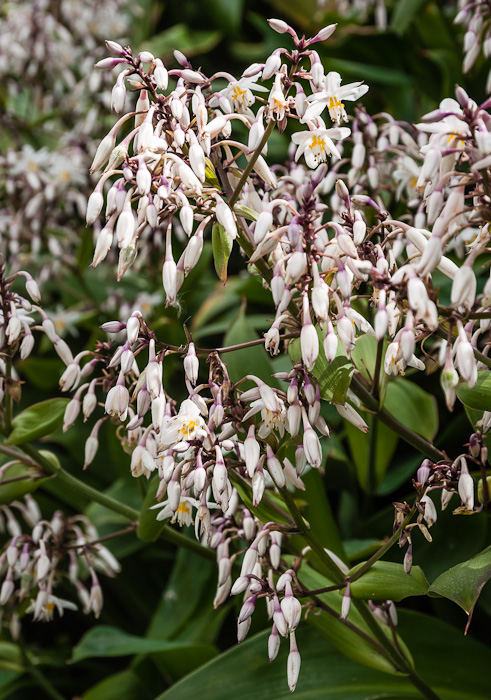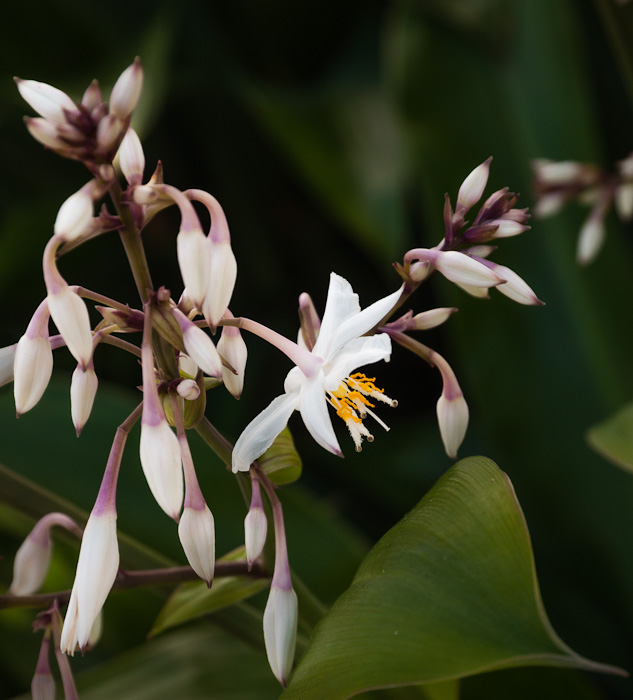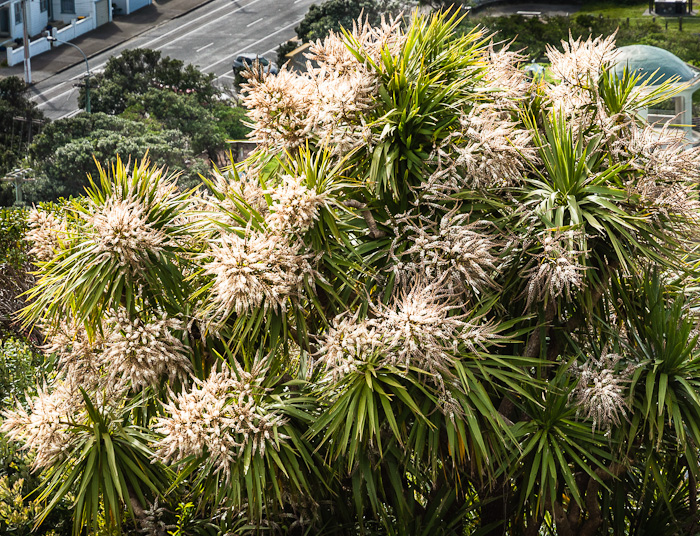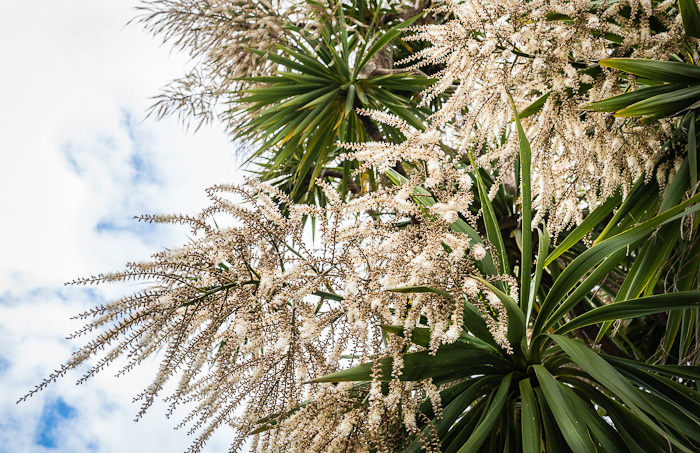At this time of year - late spring/early summer - rengarenga or rock lilies (Arthropodium cirratum) seem to be everywhere - masses of little white flowers announce their presence, lighting up the often difficult places where they tend to be planted - they cope with a wide range of conditions. The clumps of long mid-green leaves can look handsome in their own right, if they haven't been feasted upon by slugs and snails. But the sheer profusion of flowers is something else.

Close-up you can see that they are not just white - the stamens are white and purple, and have yellow bristly brush-like anther tails, and the buds have a purplish flush.
It is endemic to New Zealand. The significance of rengarenga to Maori as outlined in this RNZIH paper has been considerable, a food source also used for medicinal, spiritual and other cultural purposes.

From a wee lily to a tree lily...the flowers are again small but large in number.
Ti kouka, ti, or cabbage tree (Cordyline australis) is another endemic New Zealand plant. The distinctive spiky tree shape is seen on farm paddocks, on the margins of bush and in gardens through the country, although it has been decimated in some areas, especially Northland, because of a disease appropriately named Sudden Decline. Fortunately there seems to be a lessening in its severity in recent years.
Looking down on a mature tree in flower...

And looking up...

The flowers are sweetly scented and followed by numerous berries. The native pigeon, an impressive large bird, loves to feed on them.
One of the largest tree lilies in the world, it is also very resilient. Ti does well as a coloniser on bare ground and is often used in restoration plantings. It has a deep taproot that holds fast to the ground, fire resistant bark, and is easily propagated from seeds or cuttings, even bark cuttings. Ti has also flourished in gardens in the Northern Hemisphere and has acquired the name "Torquay Palm" in its travels - Torquay in the south of England is a long way from home!
But despite attempts to appropriate it, we tend to regard it as an iconic tree, a symbol of New Zealand.